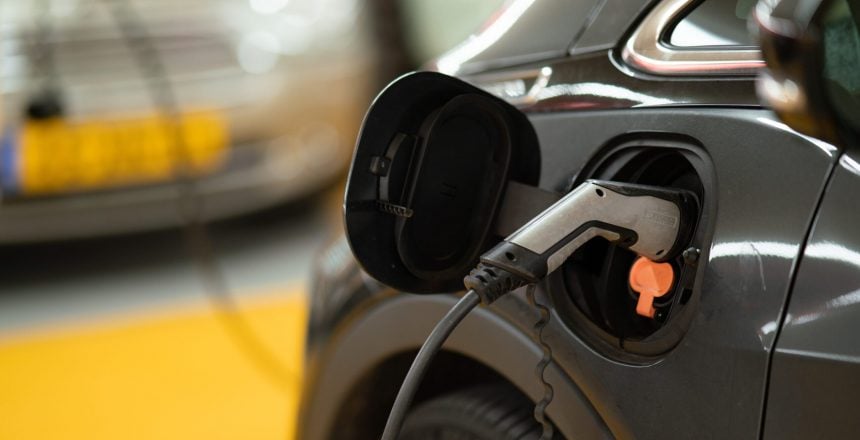All electric HOURCARs require that members leave the car charging at the end of their trip. Chargers are located for each vehicle in the “Electric HOURCAR Parking Only” space, located at the vehicle’s hub.
Avoid a Totally Avoidable $25 Low Battery Fee and remember to plug in and make sure the vehicle is charging at the end of your electric HOURCAR trip.
Chargepoint (Most Hubs): Here's How to Charge
Where some stations may appear different, all Chargepoint locations have the same process to initiate charge.
1. Pull up to the charger located at the vehicle’s hub.

2. Locate the keychain sized charging card in the glovebox, plugged into the keyholder. You will also see the larger, EV Spot Network card for use at EV Spot Chargers that will not work for the charger located at the hub.
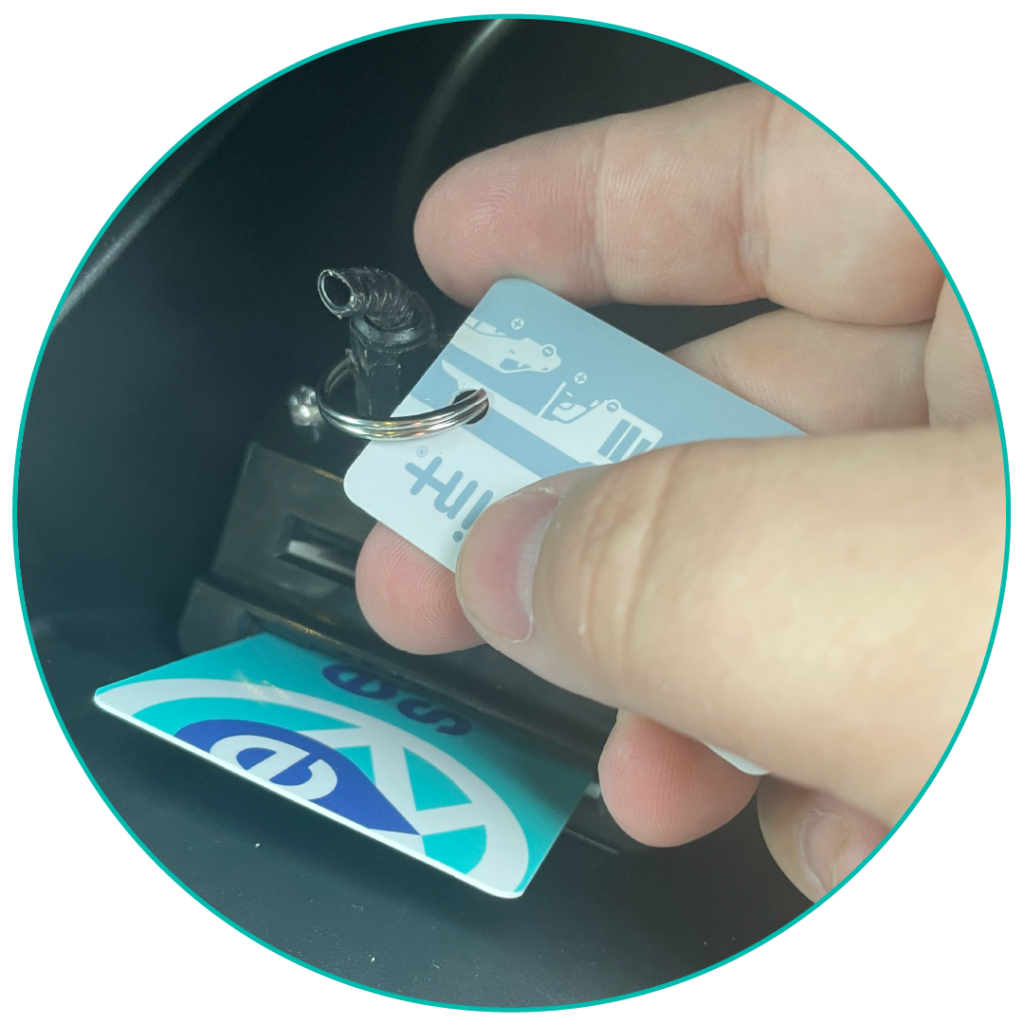
3. Open the charging door. On the Nissan Leaf, push the button to the left of the steering wheel to open the charge door, located at the front of the car. On the Chevy Bolt, push in on the charge door under the drivers rear-view mirror to pop open.
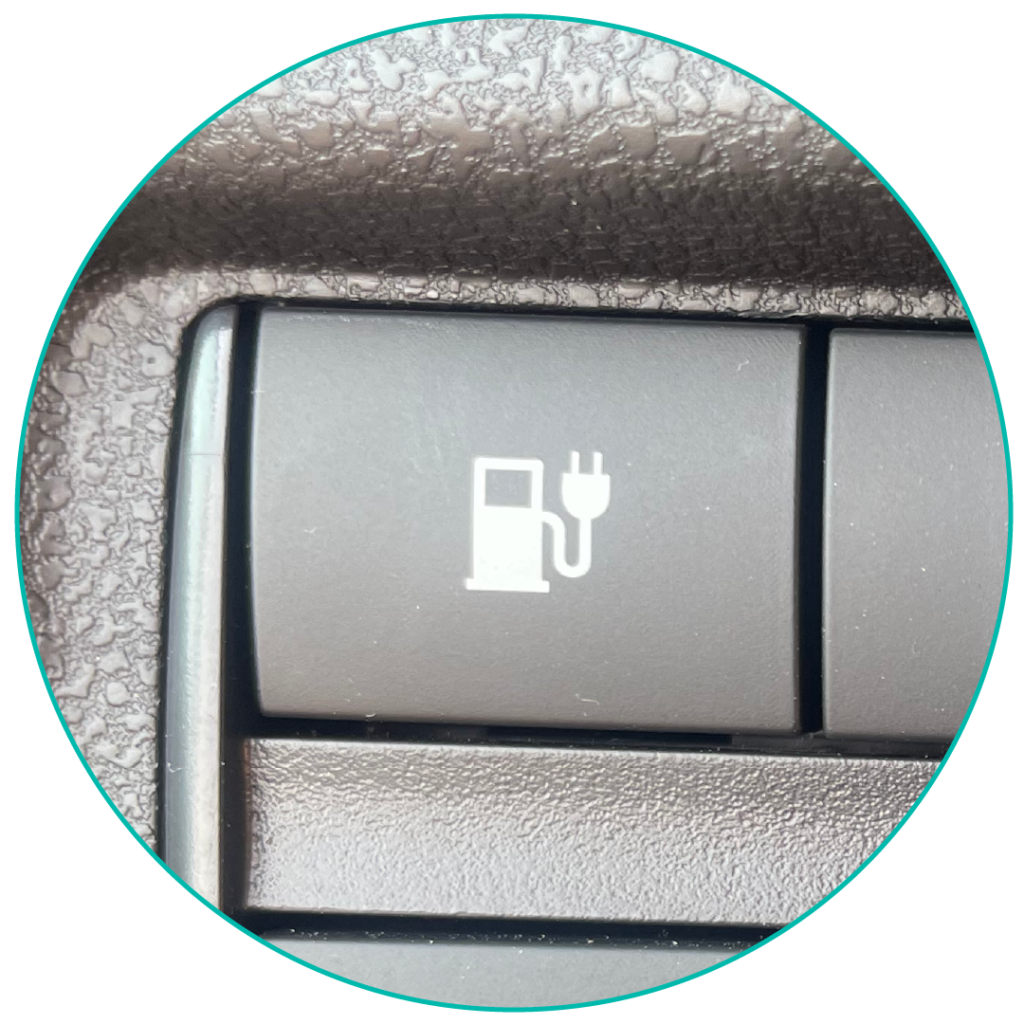
4. Tap the keychain sized charging card on the station’s RFID card reader.
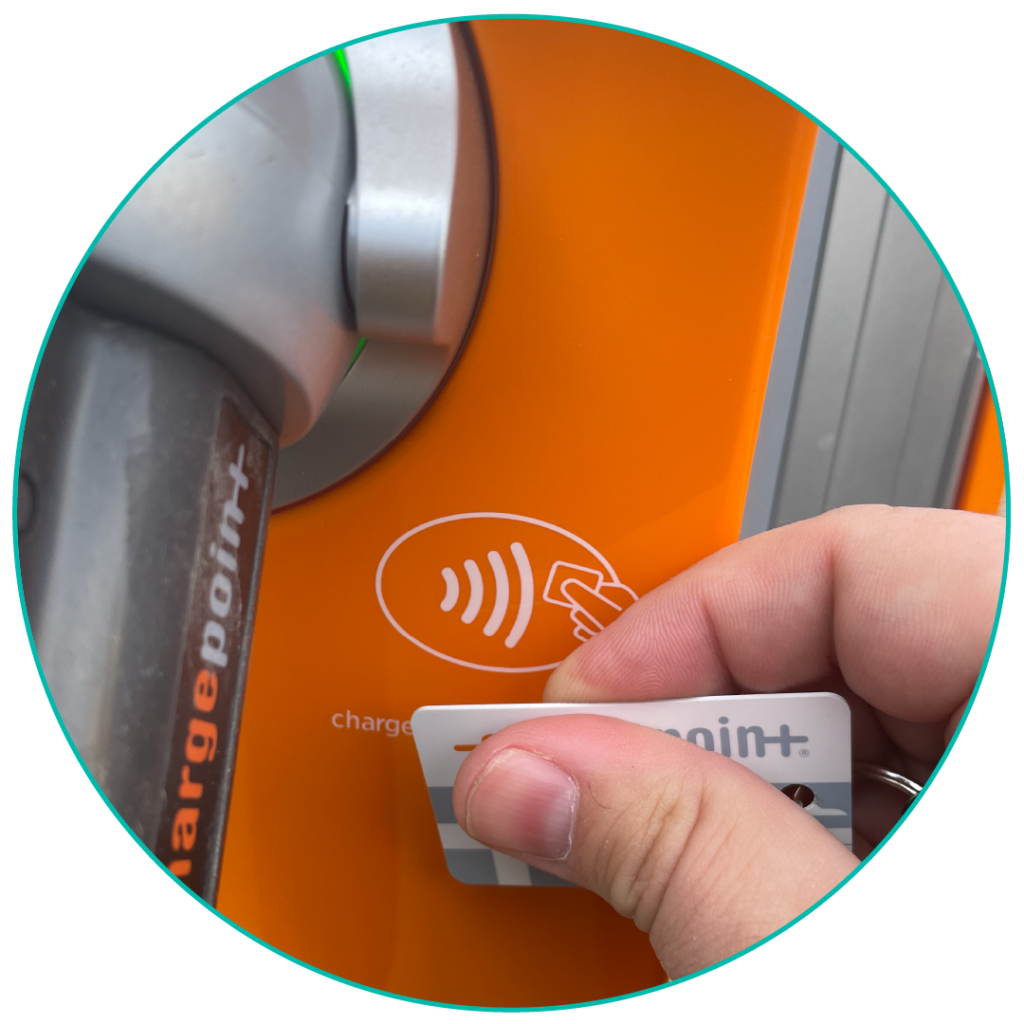
5. Plug in the charging cable. Verify the car is charging by looking at the dashboard (where the speedometer is located) or at the lights on top of the dash.
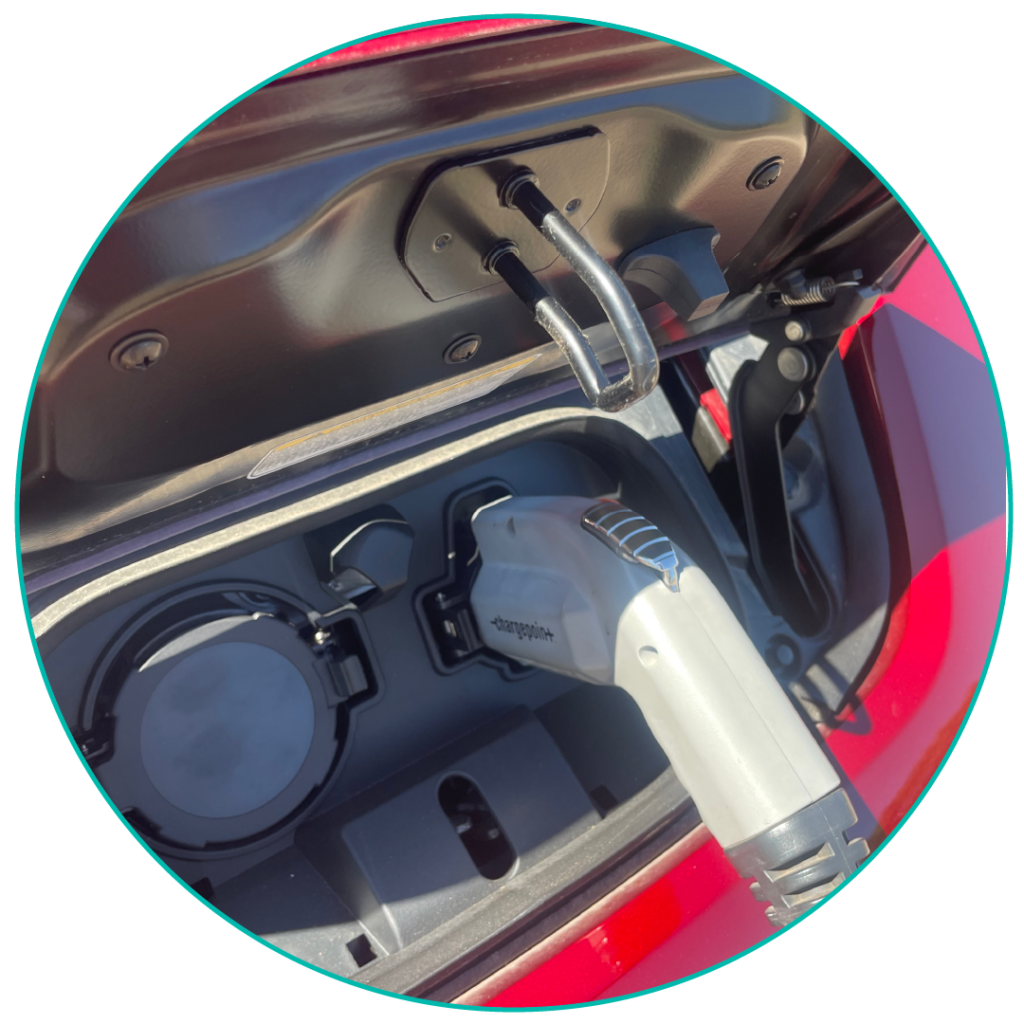
6. Return the charging card to the glovebox location and end your trip.

EATON (TPT Ramp): Here's How to Charge
The TPT Electric HOURCAR requires a fob, located in the glovebox, to initiate charge.
1. Pull up to the charger located at the vehicle’s hub.
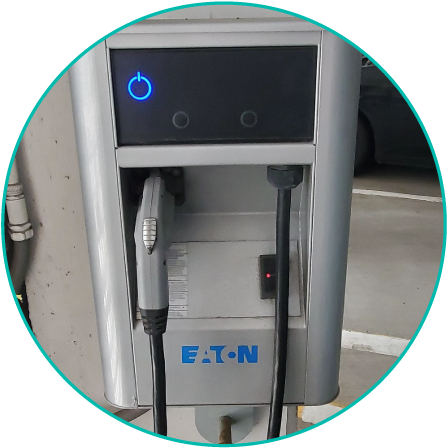
2. Locate the keychain sized charging fob in the glovebox, attached to the parking pass. You will also see the larger, EV Spot Network card for use at blue EV Spot Chargers and the keychain sized ChargePoint card that will not work for the charger located at this hub.
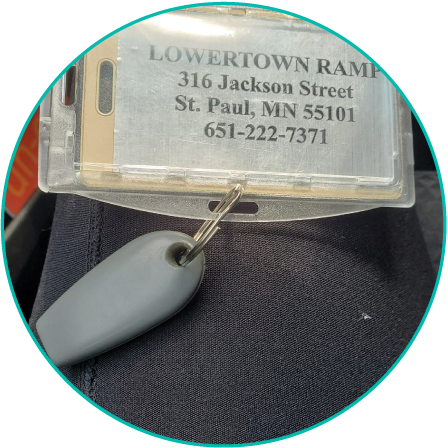
3. Open the charging door. On the Nissan Leaf, push the button to the left of the steering wheel to open the charge door, located at the front of the car. On the Chevy Bolt, push in on the charge door under the drivers rear-view mirror to pop open.

4. Tap the keychain-sized RFID charging fob on the station’s RFID fob reader.
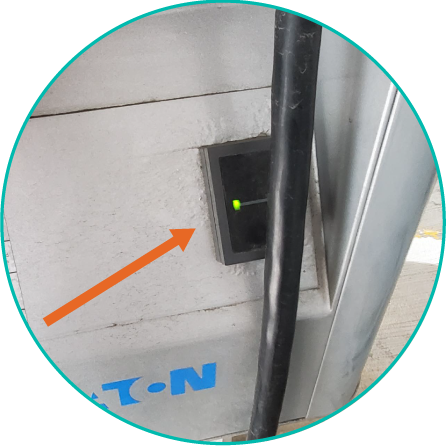
5. Plug in the charging cable. Verify the car is charging by looking at the charger to see a notification of a lightening bolt over a battery light up. Additionally, check the in-car dashboard (where the speedometer is located) or at the lights on top of the dash.
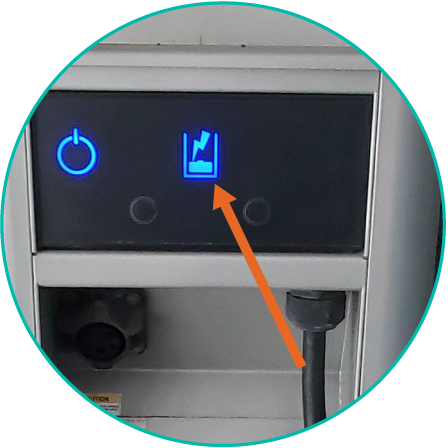
6. Return the charging card to the glovebox location and end your trip.

Minneapolis Elliot Park - 1600 Park Ave & Minneapolis North Loop - Intersect: Here's How to Charge
Charging instructions at these sites may change as charging infrastructure is updated.
1. Pull up to the charger located at the vehicle’s hub.
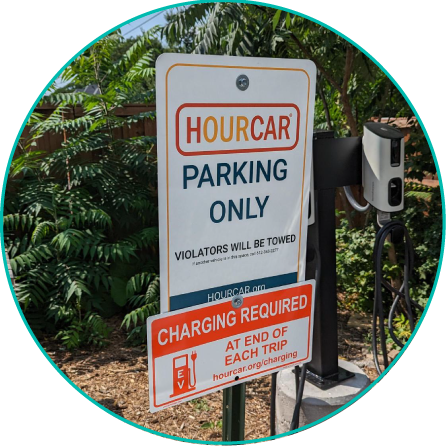
2. Open the charging door. On the Nissan Leaf, push the button to the left of the steering wheel to open the charge door, located at the front of the car. On the Chevy Bolt, push in on the charge door under the drivers rear-view mirror to pop open.

3. Plug in the charging cable. This location does not need an RFID card to allow charging access on our vehicles.
Verify the car is charging by looking at the dashboard (where the speedometer is located) or at the lights on top of the dash.

4. End your trip and carry on!

Questions About Charging
- Because charging infrastructure is relatively new, the process is not always the same at every charger. In general, you will need to open the car’s charging hatch, plug in the cable into the car’s charging port, and swipe an RFID or credit card to start charging. We provide specific instructions for how to charge the electric HOURCAR with the charger at its hub in our Tips and Tricks guide, as well as on the RFID card in the car. For other chargers, follow any instructions posted at the charging station.
- If in doubt whether the charger is working, you can check the vehicle’s dashboard. The vehicles dashboard is the best way to make sure the car is charging, as different chargers have different light indications.
The glovebox of the car contains a keychain sized ChargePoint card that is plugged into the key port and a credit card sized blue EV Spot Charging Network card. Some hubs may have additional charging options for the charger at the hub.
EV Spot Network Card
- Use this card for mid-trip charging at any of the blue EV Spot Network locations, labeled with “Public Charging”. Follow all parking rules posted at blue EV Spot Chargers to ensure you do not get a parking ticket.
ChargePoint Card
- Use this to activate the charge on most of the electric HOURCAR hubs, with the exception of a few. See above specifics for hub charging instructions.
- This card can also be used to pay for charging at any charger operated by ChargePoint if you need mid-trip charging. Filter for ChargePoint operated chargers at Plugshare.com to find these chargers.
Other Networks
- If you are at a charger that is operated by a different provider, the ChargePoint and EV Spot Network cards will not work. Follow the charger instructions to pay for charging fees and forward your receipts to [email protected] for reimbursement of costs via drive credit.
- The speed of charging the car up depends on the type of charger you use, how charged the car already is and the current weather temperatures.
- Type of Chargers
- Charging a car from empty to full using the charger at the hub typically takes 8-12 hours.
- Meanwhile, charging from a Level 1 charger, or a typical outlet will take 24-48 hours.
- The fastest charging speeds come from DC fast chargers, sometimes called level 3 chargers or DCFC. This can charge an electric vehicle much more quickly (15 minutes to 2 hours) but costs much more.
- As an electric vehicle gets closer to fully charged, charging rate slows down at/around 80% of charge. This is intentional to reduce stress on the battery. Charging the additional 20% will take more time to ensure reduced stress.
- Cars charging in extreme temperatures (below 32 F or above 100 F) take longer to charge. In a Minnesota winter, charging takes about 50% longer on average than in summer. For example, if you’d expect the car to charge back to full in an hour during summertime, you should expect it to take an hour and a half on a winter day.
- The levels of charging refer to how much power each type of charger can provide to charge up the car. The higher the level, the faster the electric HOURCAR can get back up to a full battery.
- Level 1 chargers provide the same power as a normal outlet in a garage and can fully charge an electric HOURCAR in 24-48 hours.
- Level 2 chargers provide about twice as much power as their Level 1 counterparts. Using this kind of charger will typically require 8-12 hours to charge a car from 0-100. These chargers all use the same plug-in port, which is standardized across all electric HOURCARs and almost all electric vehicles in general.
- The fastest charging speeds come from Level 3 chargers, more often called DCFC or DC fast chargers. This can charge an electric vehicle in 15 minutes to two hours, significantly faster than Level 1 or 2 chargers. However, because these chargers require a tremendous amount of power, they are harder to find, and can often be more expensive to use than Level 1 or 2 chargers. In addition, fast chargers, unlike Level 1 or Level 2 chargers, have a variety of plug-in port types which can serve some cars but not others. Refer to our FAQ on the kind of Level 3/DCFC charger you can use for more information on this topic.
- Electric vehicles are still a relatively new technology, so not everything is standardized across the industry yet. When it comes to fast charging, there are a few different port types that manufacturers use (the same way iPhone chargers are different from Android ones). Below you can find the two different types of electric vehicles in our fleet along with their compatible port.
- Nissan Leafs: CHAdeMO
- Chevrolet Bolt: CCS/SAE
- Tesla Super Chargers use a third type of port that is not yet compatible with any of our vehicles.
- Charging stations are not as ubiquitous as gas stations (yet!), so you will probably need to put more effort into finding a charger than a gas station. Luckily there are a few options available to make this search easier.
- All electric HOURCARs have a charger located at each dedicated parking space. Each trip must end with the vehicle properly charging so the next member can begin their next trip with the most range possible.
- If you’re driving around Minneapolis or St Paul, you can charge up at blue EV Spot Chargers. Use the blue chargers with the blue EV Spot Charging RFID card provided in the vehicle – only Evies can charge on the green chargers.
- If you’re planning on going outside of the Twin Cities, we recommend using the Plugshare app – this app shows stations from every charging network in one location, which you can filter by other users ratings, charging network, or the type of car you’re driving.
- We recommend searching specifically for Chargepoint stations, as the electric HOURCAR comes equipped with an RFID card that charges HOURCAR directly for the cost of using the station.
- We also recommend putting in the car model in your Plugshare app, as different cars have different charging ports for DCFCs. Refer to our “What kind of Level 3/DCFC charger can I use/” FAQ to learn more
- Yes! We have an RFID card for the Blue EV Spot Chargers located in the glove compartment of your electric HOURCAR. Use that card to charge on HOURCAR’s dime at any of the EV Spot Charging locations in Minneapolis or St. Paul. You can find these chargers on the Evie Carshare App or on the Plugshare App.
- Make sure to use the blue charger, because the green charger is reserved for Evie Carshare Vehicles.
Call our member services team at 612.343.2277. We can help resolve the situation.
- HOURCARs are available for trips up to three days, and electric HOURCARs are no exception! If you are interested in taking an electric HOURCAR on a long trip, plan your charging locations in advance. A fully charged electric HOURCAR can travel up to 280 miles on one full charge. If the car is not fully charged, or you need to go further, it will be important to plan how to charge. Make sure to plan time for the car to charge up! Understanding the differences in charging time by different levels of chargers will help you plan for this.
- Use the Plugshare app to find chargers on the way to and in your destination.
- We recommend searching specifically for Chargepoint or EV Spot Charging stations, as the electric HOURCAR comes equipped with an RFID card that charges HOURCAR directly for the cost of using the station.
- We also recommend putting in the car model in your Plugshare app, as different cars have different charging ports. Take a look at our FAQ about finding the right charger to learn more.

